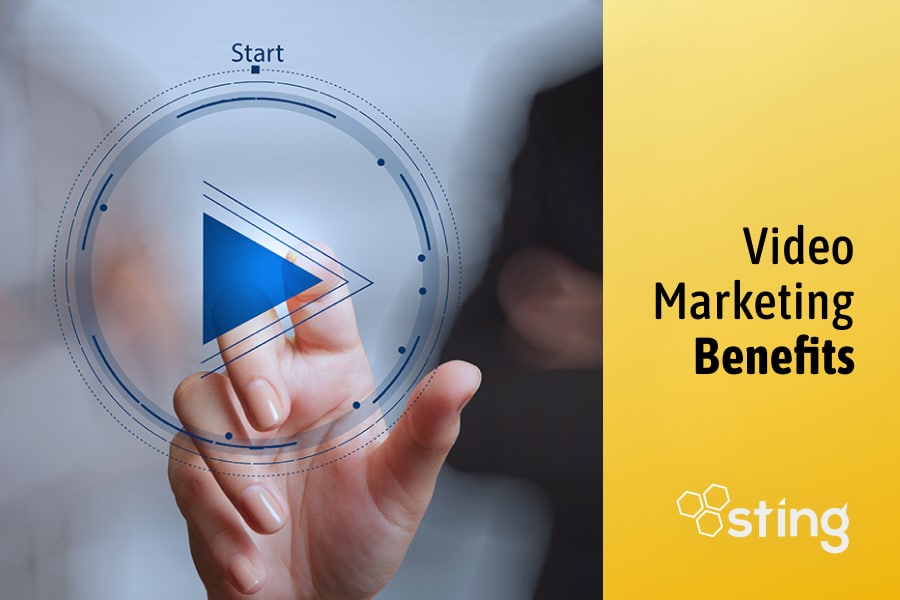In today’s digital environment, online video is a key component of any marketing strategy. It is estimated that 80% of all web-based traffic will be in a video format by 2022. Marketing campaigns should include video content because data show that the majority of audiences prefer video. Other than Facebook, YouTube currently has the largest number of active users.
In High Demand
In a recent HubSpot report, over 50% of respondents said that they preferred to watch videos than other forms of content. This suggests that those marketing a product or service cannot afford to overlook this. The majority of platforms including YouTube, Facebook, Vimeo, and others now make it easier than ever to share video content.
Easier to Create
Producing a video and posting it across various platforms is also increasingly more cost-effective. This stems from the combination of advancements in technology and affordability. Smartphones are now able to generate a good-quality 4K video. Excellent quality video production is possible with the right camera equipment, sufficient lighting, and software for editing.
There were some functional limitations associated with video use earlier on in the internet age. Today, most connections have sufficient bandwidth so that videos are presented without buffering. The equipment has advanced processors that can effectively support video—even on our handheld devices.
Types of Video Content
Like all forms of marketing, the purpose and target audience should be defined when creating videos. Some common examples of how video may be used are as follows:
- Business-to-business (B2B) or business-to-consumer (B2C) marketing
- Hiring and recruiting potential employees
- Frequently asked questions (FAQ) segments
- Lead generation efforts
- Technical support or customer service
- Customer or client case studies and testimonials
Creating a Blend of Sound and Vision
Video can bring together both audio and visual content that is engaging. It allows for the ability to stir the emotions. Video content is effective in building trust, telling a story, adding humor, and much more.
Social Media Compatibility
Did you know that in 2018 roughly 93% of businesses using social media have engaged a new customer through video? The vast majority of social media platforms integrate with video. These channels all allow for this content to be shared seamlessly.
Search Engine Optimization (SEO)
Optimizing your web presence for search engines like Google is another benefit of video. This should be no surprise, as Google purchased YouTube back in 2006. Search engine algorithms evaluate the quality of sites and their content using various metrics.
The amount of time that a user spends on a site is a key metric that search engines consider. Data shows that users tend to stay longer on sites with embedded videos. Video is also able to be optimized in many of the traditional methods.
Videos should contain titles and descriptions that have been researched. Marketers should create tags comprised of keywords that are relevant to the topic. Video is now used on landing pages as an effective tool in beginning the sales conversion process.
Ability to Track Data and Results
In the realm of web-based marketing, the effectiveness of any campaign must be measurable. Today, journey tracking applications such as Smaply, Gliffly, and Google Analytics can accurately track consumer behavior related to a video. Analyzing this data provides you with a wealth of critical information.
Differentiate Yourself
Many web users strongly prefer video to written content. Having video content will often differentiate you from competitors. Video content allows consumers to quickly and easily watch, embed, share, and make comments.
Increase Conversion Rates
Data has shown the effectiveness of including video on web landing pages. Up to 90% of consumers say that videos are useful in making purchasing decisions. Video marketing is effective in prompting viewers to take action such as subscribing to a newsletter, downloading a brochure, etc.
Video content is also an excellent tool for generating interest. For example, consumers may initially watch a product video and request additional information. This lead can then be transitioned to a salesperson to move the process forward.
Driving Traditional Retail Sales
Brick-and-mortar retailers should also be aware of how video marketing can boost sales. A recent report identified a trend showing consumers often review product-related videos before making in-store purchases. Retail marketers often find that online video marketing delivers a higher return on investment (ROI) compared too many traditional methods.
Reducing Tech Support and Customer Service Costs
Businesses that use video in their technical support or customer service efforts may benefit tremendously. A consumer can simply watch a video that addresses their questions or concerns. This translates to cost savings by reducing the need for staff to handle live phone calls or chats.
Digital Marketing Agency that Delivers Results
Is your business struggling to implement a true digital marketing strategy? Are significant resources being spent on marketing campaigns without the ability to truly evaluate their performance or effectiveness? Sting Marketing can help your business achieve its goals. Contact one of our growth strategists today at (888) 858-7776.






